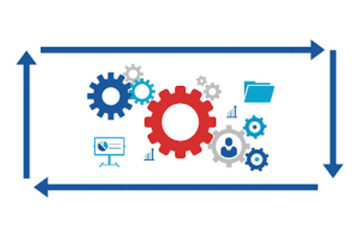3 Client Lifecycle Hurdles Facing Wealth Management

By James Monaghan
According to a recent industry report, the global private banking and wealth management industry is undergoing a buoyant resurgence after a difficult few years brought about by the damage caused by the global financial crisis of 2008. With the global High Net Worth (HNW) wealth expected to surpass $100 trillion by 2025, private banks and wealth management firms are now facing an unprecedented opportunity to grow both market and wallet share.
However, in tandem with this opportunity, the industry is also beset by sizeable challenges in managing HWN clients throughout their lifecycle from initial onboarding and compliance to managing and growing their accounts and assets on an ongoing basis. The sheer task of opening new accounts for and onboarding new HWN clients has become an obstacle course of Olympian standards.
From our experience, there are three core – but interrelated – challenges facing private banks / wealth management firms today:
- Regulatory Compliance
With a necessity to comply with local and global regulations spanning anti-money laundering (AML), know your customer (KYC), suitability rules (KYC, MiFID II etc.) and tax compliance (FATCA, CRS, 871M), private banks and wealth firms often find themselves having to vault over hurdles imposed by siloed internal systems and data repositories, lack of data management and governance, and manual orchestration processes to onboard clients compliantly.
The volume and pace of regulatory change is set to continue apace for some time to come with the introduction of increased Suitability requirements, Foreign Account Tax Compliance Act (FATCA), Common Reporting Standard (CRS), 871M and Markets in Financial Instruments Directive (MiFID) II, in addition to increased fiduciary duty. The recent scandal around the Bahamas and Panama Papers leaks, and the ensuing public outcry from it, has also thrown the regulatory spotlight on wealth management practices once again.
- Operational and Digitization Challenges
Given that most larger wealth management firms have grown through a combination of organic growth and M&A, this has helped only to create an internal environment comprised of multiple siloed technology stacks and data management repositories with little or no connectivity between them, making it a monumental task to store, update and locate paperwork and documents for a client.
This all adds to costly inefficiencies, requiring more time and effort from wealth managers, increasing the time it already takes to onboard clients and generate revenue, and impacting the client’s overall experience. If this is what happens during the initial onboarding, it must surely discourage future product onboarding opportunities.
- Client Experience (CX) and Operational Efficiencies
All of this culminates to create a frustratingly lengthy and fragmented onboarding experience for clients. And it doesn’t get much better for relationship managers, whose sole remit is to ensure a positive client experience that encourages asset growth over a long-term relationship.
In the real world, opening accounts is a costly, error-prone, laborious and ‘dated’ experience (the latter compared to other ‘sign-up’ experiences or online activities). Fragmented systems, data and documentation mean that relationship managers find themselves repeatedly asking clients to submit and resubmit data and documentation required to support the account opening or new product onboarding process. And most of this data capture is manual, usually involving paper-based questionnaires – even for existing clients who may be switching or adding new products. This can become a very laborious, lengthy and exacerbated process for clients, and may result in abandonment of the new account opening process.
Relatedly, this also has an impact on the advisor experience. Wealth management firms compete fiercely for share of mind from wealth managers and advisors in the hope of enticing those with a healthy client portfolio to join their ranks. Very often, the decision to move lock, stock and barrel is based on the quality of customer experience that the wealth management firm can provide.
Digitalizing the Client Lifecycle to Transform this Regulatory, Operational & Client Experience Nightmare
What was once a highly lucrative market built on the ability to create high profitability (from growing client assets whilst maintaining low capital expenditures) has been turned into an operational and client experience nightmare as a result of growing regulatory scrutiny, increasing compliance obligations and heavy dependency on the collection of more client data and documentation.
HNWIs are demanding more and more digital capability and experiences from their wealth managers, however, wealth managers are struggling to deliver making this a reality. A transformation approach to digitalizing the HNWI client lifecycle management experience is certainly required; however, wealth managers are increasingly being forced to reconcile the costs, effort and time involved in achieving this.
In my next blog, I’ll outline how wealth managers can improve internal processes and operational efficiencies by digitizing aspects of the client lifecycle process to allow them to comply with a raft of global regulations, improve client data and documentation management and deliver a superior client experience.







